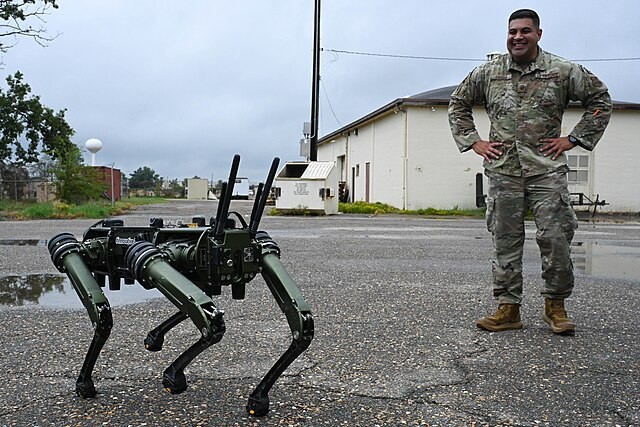
(Photo : Wikimedia Commons/Airman Rhea Beil)
A robot trained with machine learning showed how it kept its balance by switching between walking, trotting, and pronking. According to researchers, it shows how gait transitions occur in animals.
4-Legged Robot Shows Gait Transition in Animals
In the study, "Viability leads to the emergence of gait transitions in learning agile quadrupedal locomotion on challenging terrains," researchers used machine learning called deep reinforcement learning (DRL) to teach an EPFL robot -- a four-legged machine -- to move around and make gait transitions.
It trots, pronks, leaps, and arches its back like springbok and gazelles do when they navigate challenging terrains with gaps. The study provides fresh perspectives on the causes and mechanisms of these animal gait changes.
Gait shifts have been primarily explained by energy economy and musculoskeletal injury prevention, according to a previous study. Biologists have proposed in more recent times that stability on level ground may be more significant. However, research on robots and animals has demonstrated that these theories are not always true, particularly when there is uneven terrain, said PhD student Milad Shafiee, first author of the study.
Thus, Shafiee and co-authors Guillaume Bellegarda and Auke Ijspeert, head of the BioRobotics Lab, were intrigued by a novel theory regarding the cause of gait transitions: viability, or fall avoidance. In order to verify this theory, they trained a quadriplegic robot to navigate a variety of terrains using DRL. They discovered that, on level ground, various gaits exhibited varying degrees of resilience against chance pushes and that, like quadruped animals, the robot transitioned from a walk to a trot to preserve survival. Furthermore, to prevent falls, the robot instinctively changed from trotting to pronking when it encountered sequential gaps in the trial surface. Furthermore, the only thing that such gait adjustments enhanced was viability.
According to Shafiee, they demonstrated that viability causes gait transitions to arise on flat and rugged discontinuous terrain, but this does not always translate into increased energy efficiency. Energy efficiency, previously believed to be a driving force behind these shifts, appears to be more of an effect. An animal's primary concern when negotiating difficult terrain is probably staying upright, followed by energy conservation.
H1 Robot: The Most Powerful General-Purpose Humanoid
In related news, the H1 robot, developed by Unitree Robotics, a Chinese company, was dubbed the "world's most powerful general-purpose humanoid." In the robot's promotional video, an engineer from Unitree attempts to kick the robot while it is moving down the street, but he is unsuccessful because the robot always manages to regain its balance and walks on, appearing unfazed.
However, following its launch, a lot of people on social media made jokes about it because they thought the robot, which looked like a Terminator, was trying to find the closest bathroom. Another person commented in jest that one of its goals is to locate the closest public restroom as soon as possible.
The Unitree H1 robot has 360-degree panoramic perception, force-controlled movements and operations, and dexterity thanks to its own high-torque joint motors. It is 180 cm (71 inches) tall and weighs roughly 47 kg (100 lbs). It moves at 3.4 mph, nearly the same speed as a human.
RELATED ARTICLE: World's Most Powerful General-Purpose Humanoid Robot Criticized; Terminator-Esque Bot Reportedly Looks Like Trying To Find Nearest Toilet
Check out more news and information on Tech & Innovation in Science Times.

![Some Brain-Injured Patients Who Died After Life Support Was Withdrawn May Have Survived, Recovered Some Level of Independence 6 Months After Injury [Study]](https://1721181113.rsc.cdn77.org/data/thumbs/full/53613/89/56/50/40/some-brain-injured-patients-who-died-after-life-support-was-withdrawn-may-have-survived-recovered-some-level-of-independence-6-months-after-injury-study.jpg)












